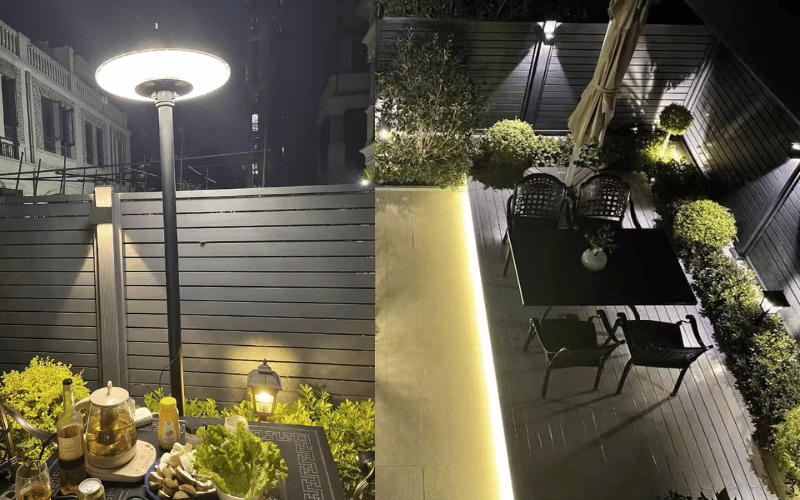Most homeowners want their yards to feel welcoming and secure after dark. Yet the thought of big electricity bills holds them back from using brighter lights. As I help clients design outdoor lighting, I frequently help them mix good brightness, budget, and efficiency into a smart solar setup.
Occasionally I see systems that crank solar light output to 30,000 or 40,000 lumens. Projects like long driveways, private roadways, or large commercial lots sometimes need beams that intense. While that much brightness covers expansive areas, it brings higher upfront costs and larger solar panels. The good news is that the typical family rarely needs those power levels. For everyday tasks like lighting a deck, walkway, or small yard, dependable solar fixtures usually deliver 3,000 lumens at most. That’s enough light for safety and usually fits a family’s budget.
After a decade of solar lighting design, I’ve witnessed how questions about brightness, battery life, and smart features drive purchasing decisions. Customers tend to ask, “What’s the right amount of brightness for my yard?” or, “How do I decide the lumen rating I really need?” In response I created this guide to demystify lumens, outline the factors that truly influence solar light performance, and give you the confidence to select the ideal system for your home or small business.
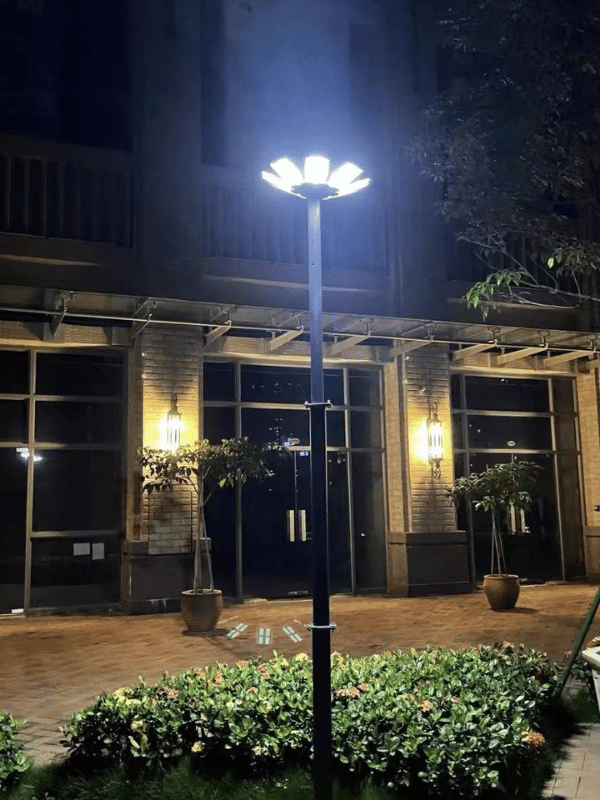
Table of Contents
ToggleWhat Are Lumens and Why Do They Matter?
As someone who has spent decades in the solar street lighting industry, I’ve seen countless customers and even professionals confuse the terminology around lighting metrics. One of the most misunderstood yet critical terms is “lumens.” Let me break it down for you in a way that not only clarifies the concept but also empowers you to make informed decisions.
Definition of Lumens
Lumens are the measure of the total visible light emitted by a source. Think of lumens as the “light power” of a bulb or fixture. It’s not about how much energy the light uses (that’s wattage) or how intense the light feels on a specific spot (we’ll get to lux in a moment). Instead, lumens quantify the total amount of light that your eyes can perceive from a source. For example, a 100-watt incandescent bulb typically produces around 1,600 lumens, while a high-efficiency LED fixture might produce the same lumens using only 15 watts. This shift in efficiency is one of the reasons why understanding lumens is so important in today’s lighting landscape.
Lumens vs. Lux: Clearing Up the Confusion
Here’s where many people get tripped up: lumens and lux are related but distinct. While lumens measure the total light output of a source, lux measures the intensity of that light on a specific surface area. Imagine you’re standing under a solar streetlight. The lumens tell you how much light the fixture is emitting in total, while the lux tells you how much of that light is actually reaching the ground where you’re standing.
To put it another way, lux is lumens spread over a given area. If you have 1,000 lumens concentrated into a small area, the lux will be high, creating a bright, focused beam. Spread those same 1,000 lumens over a larger area, and the lux decreases, resulting in a softer, more diffused light. This distinction is crucial when designing solar street lighting systems, as the goal is often to balance brightness (lumens) with uniform coverage (lux) to ensure safety and visibility.
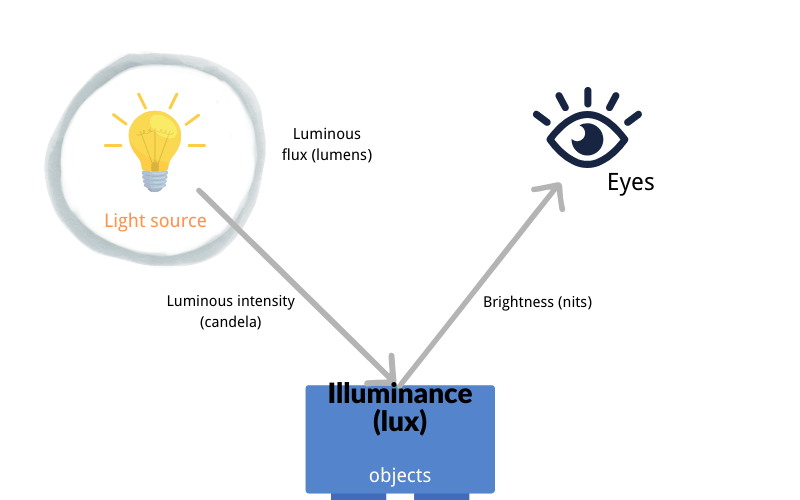
Lumens vs. Lux Comparison
| Metric | Measures | Typical Use Case |
|---|---|---|
| Lumens | Total light emitted | Overall brightness output of a lamp |
| Lux | Light intensity on a surface | Brightness felt on surfaces (e.g., ground, wall) |
Why Lumens Matter
In my years of working with solar street lighting, I’ve found that lumens are one of the most practical metrics for consumers to compare products. Here’s why: lumens give you a direct sense of how bright a light source will be, regardless of the technology behind it. Whether you’re evaluating an LED fixture, a compact fluorescent lamp, or even a traditional halogen bulb, lumens provide a universal standard for brightness.
For example, when selecting a solar streetlight, you might see two products with similar wattages but vastly different lumen outputs. The higher-lumen product will deliver more visible light, making it the better choice for areas requiring high illumination, such as busy intersections or parking lots. On the other hand, a lower-lumen fixture might be sufficient for pathways or residential streets, where softer lighting is more appropriate.
But here’s the catch: more lumens aren’t always better. Over-lighting an area can lead to glare, wasted energy, and even light pollution. This is where my expertise comes into play. A well-designed solar street lighting system considers not just the lumen output but also the placement, beam angle, and lux levels to create an optimal lighting environment. It’s about delivering the right amount of light, in the right place, at the right time.
Factors That Influence Solar Light Brightness
After decades in the solar street lighting industry, I’ve learned that achieving optimal brightness isn’t just about choosing the brightest light source—it’s about understanding the interplay of multiple factors. Let me walk you through the key elements that determine the performance of solar lighting systems and how to make informed decisions.
1. LED Efficiency
Understanding Lumens per Watt (lm/W):
Lumens per watt (lm/W) is a critical metric that measures how efficiently an LED converts electrical energy into visible light. Think of it as the “miles per gallon” for lighting. A higher lm/W value means more brightness for less energy consumption. For example, a standard LED might deliver 80 lm/W, while high-efficiency LEDs can achieve 150 lm/W or more. This efficiency directly impacts the overall performance of solar streetlights, as it determines how much light you can get from the limited energy stored in the battery.
Comparing LED Types:
- Standard LEDs (80-100 lm/W): These are cost-effective and suitable for low-demand applications like residential pathways. However, they may require larger batteries and panels to achieve adequate brightness.
- High-Efficiency LEDs (120-150 lm/W): These are ideal for urban streets and parking lots, where consistent brightness and energy efficiency are critical.
- Top-Tier LEDs (160+ lm/W): These cutting-edge chips are used in premium systems, such as highway lighting or large public spaces, where maximum brightness and long-term reliability are non-negotiable.
Cost-Benefit of High-Efficiency LEDs:
While high-efficiency LEDs come with a higher upfront cost, they pay off in the long run. By reducing energy consumption, they allow for smaller batteries and solar panels, cutting overall system costs. Additionally, their longer lifespan reduces maintenance expenses, making them a smart investment for municipalities and businesses.
LED Chip Efficiency and Applications
| LED Chip Efficiency | Lumens per Watt (lm/W) | Typical Uses |
|---|---|---|
| Standard | 100 – 120 | Basic home lighting |
| High Efficiency | 150 – 180 | Street lighting projects |
| Top Tier | 180+ | Specialized applications |
2. Battery Capacity and Performance
Battery Size and Charge Levels:
The battery is the heart of any solar lighting system. Its capacity (measured in watt-hours) determines how long the light can operate, while its charge level directly affects lumen output. A fully charged battery ensures maximum brightness, but as the charge depletes, the light output may dim unless the system is designed to regulate it.
Role of Solar Controllers (PWM vs. MPPT):
Solar controllers manage the flow of energy between the solar panel, battery, and LED.
- PWM (Pulse Width Modulation): A simpler, cost-effective option, but less efficient in maximizing battery charge, especially in low-sunlight conditions.
- MPPT (Maximum Power Point Tracking): A more advanced controller that optimizes energy harvesting from the solar panel, ensuring consistent brightness even in challenging climates.
Examples:
In sunny regions like California, a smaller battery paired with an MPPT controller can maintain consistent brightness year-round. However, in cloudy or winter-prone areas like the Pacific Northwest, larger batteries and MPPT controllers are essential to store and utilize every bit of available energy.
3. Solar Panel Power
Panel Size and Efficiency:
The solar panel’s size and efficiency determine how quickly the battery charges and, by extension, how long the light can operate at full brightness. High-efficiency panels (20%+ efficiency) can generate more power in limited space, making them ideal for urban installations where space is at a premium.
Matching Panel Power to Battery Capacity:
One of the most common mistakes I’ve seen is mismatching the solar panel and battery. If the panel is too small, the battery won’t charge fully, leading to dim or inconsistent lighting. Conversely, an oversized panel can drive up costs unnecessarily. A well-designed system balances panel power and battery capacity to ensure reliable performance without waste.
4. Beam Angle and Light Distribution
How Beam Angle Affects Light Spread:
The beam angle of an LED determines how the light is distributed. A narrow beam (e.g., 30°) focuses light on a small area, creating intense brightness, while a wide beam (e.g., 120°) spreads light over a larger area but with less intensity. Choosing the right beam angle is crucial for optimizing both brightness and coverage.
Optimizing Beam Angles for Applications:
- Pathways: Use a narrow beam angle to focus light on the walking path, minimizing light spill and maximizing efficiency.
- Parking Lots: A wider beam angle ensures even coverage across a large area, reducing dark spots and improving safety.
- Intersections: Combine narrow and wide beam angles to provide focused brightness at key points while maintaining general visibility.
By carefully selecting and positioning fixtures with the appropriate beam angles, you can achieve the perfect balance of brightness and coverage for any application.
These factors are the building blocks of a successful solar street lighting system. By understanding and optimizing each one, you can ensure your lighting solution delivers maximum performance, efficiency, and value. After all, in this industry, it’s not just about lighting the way—it’s about doing it smarter.
Current Lumen Ranges for Different Types of Solar Lights
After decades in the solar street lighting industry, I’ve seen how the evolution of LED technology and solar systems has expanded the range of applications for solar lights. However, understanding the appropriate lumen range for your specific needs is critical to achieving the right balance of brightness, efficiency, and cost. Let me guide you through the current lumen ranges for different types of solar lights and their practical applications.
Residential Solar Lights (100-1,000 Lumens)
Examples: Pathway lights, wall-mounted lights, garden lamps.
Use Cases: Creating a cozy atmosphere, illuminating small areas.
Residential solar lights are designed for low-intensity applications where aesthetics and functionality go hand in hand. For instance, a 100-lumen pathway light is perfect for softly illuminating a garden path, creating a welcoming ambiance without overwhelming brightness. Wall-mounted lights in the 500-1,000 lumen range are ideal for lighting up entryways or patios, providing enough visibility for safety while maintaining a warm, inviting feel.
Pro Tip: When selecting residential solar lights, prioritize models with motion sensors. These not only conserve battery life but also provide a burst of brightness when needed, such as when someone approaches a pathway or door.
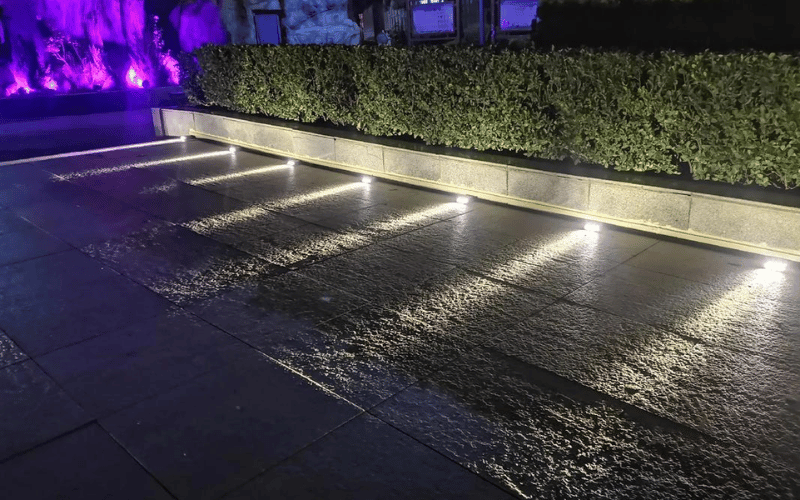
Small Commercial Solar Lights (300-3,000 Lumens)
Examples: Retail storefronts, small parking lots, decorative lighting.
Use Cases: Moderate brightness for safety and visibility.
Small commercial solar lights are a step up in brightness, designed to enhance safety and visibility in areas with moderate traffic. For example, a 1,000-lumen fixture can effectively light a small parking lot, ensuring drivers and pedestrians can navigate safely. Retail storefronts often use decorative solar lights in the 300-1,500 lumen range to highlight signage or create an inviting exterior.
Pro Tip: For commercial applications, look for lights with adjustable beam angles. This allows you to focus the light where it’s needed most, reducing light spill and improving efficiency.
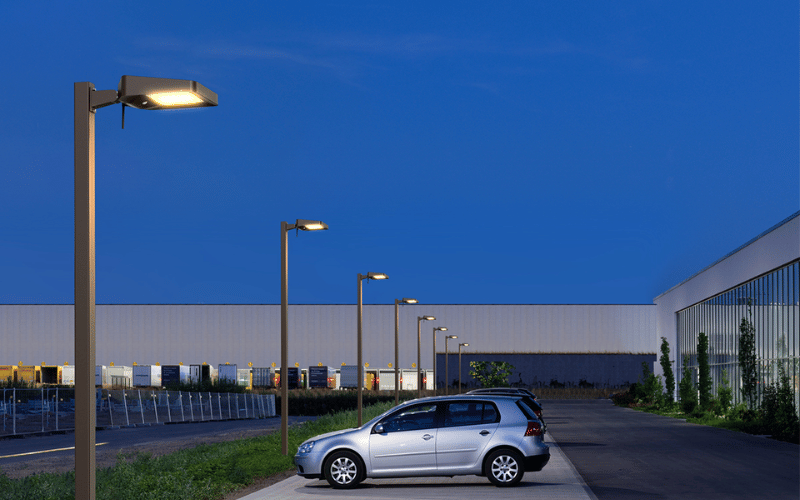
Large-Scale Solar Lights (3,000-40,000 Lumens)
Examples: Solar streetlights, floodlights for wide areas.
Use Cases: Large roads, airports, industrial projects.
When it comes to large-scale applications, high-lumen solar lights are the go-to solution. A 3,000-lumen streetlight is sufficient for residential roads, while fixtures in the 10,000-20,000 lumen range are commonly used for highways or industrial yards. For massive projects like airports or sports fields, floodlights exceeding 30,000 lumens provide the intense brightness needed to cover vast areas.
Trade-Offs of High-Lumen Systems:
While high-lumen systems deliver exceptional brightness, they come with certain trade-offs:
- Cost: High-lumen fixtures require larger solar panels and batteries, increasing upfront costs. However, the long-term savings in energy and maintenance often justify the investment.
- Weight: The larger components add weight, which can complicate installation and may require reinforced poles or mounting structures.
- Installation Complexity: High-lumen systems often involve more intricate wiring and setup, especially for projects requiring multiple fixtures. Professional installation is usually recommended to ensure optimal performance.
Pro Tip: For large-scale projects, consider hybrid systems that combine solar with grid power. These systems can provide consistent brightness even during extended periods of low sunlight, ensuring reliability in critical applications.
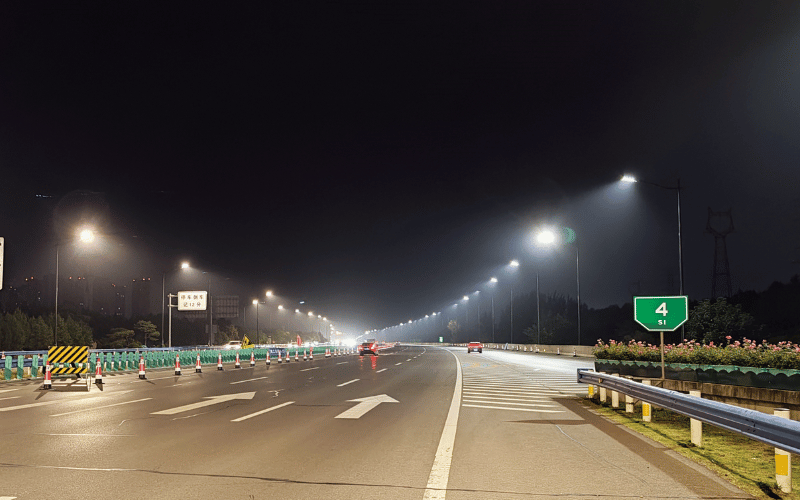
So
Choosing the right lumen range for your solar lighting project is about more than just brightness—it’s about understanding the specific needs of your space and balancing performance with practicality. Whether you’re lighting a garden path or an industrial yard, the key is to select a system that aligns with your goals while delivering long-term value. With the right guidance and planning, solar lighting can illuminate not just spaces, but possibilities.
How to Choose the Right Solar Light for Your Needs
Selecting the right solar light isn’t just about picking the brightest option or the most expensive system. It’s about understanding your specific needs and designing a solution that balances performance, efficiency, and cost. Let’s explore the key considerations to help you make an informed decision.
Assessing Your Brightness Requirements
The first step in choosing the right solar light is to determine how much brightness you actually need. This depends on several factors:
- Area Size: Larger areas require higher lumen outputs and wider beam angles to ensure even coverage. For example, a small garden path might only need a 200-lumen light, while a parking lot could require multiple 3,000-lumen fixtures.
- Purpose: Are you lighting for safety, ambiance, or task-specific needs? For safety, prioritize higher brightness and uniform coverage. For ambiance, softer lighting with a warm color temperature is ideal. Task lighting, such as for outdoor workspaces, demands focused, high-intensity light.
- Local Regulations: In some areas, there are specific lighting standards for public spaces, such as minimum lux levels for roads or pathways. Be sure to check these requirements to ensure compliance.
How to Calculate Lux Levels:
Lux measures the intensity of light on a surface, and calculating it can help you determine the right setup. The formula is simple:
Lux = Lumens ÷ Area (in square meters).
For example, if you’re lighting a 10-square-meter area with a 1,000-lumen light, the lux level would be 100. For pathways, a lux level of 5-10 is often sufficient, while parking lots may require 20-30 lux for safety. Tools like lux meters or online calculators can help you fine-tune your design.
Balancing Brightness and Cost
One of the most common mistakes is focusing solely on raw lumen numbers without considering efficiency or proper placement. Here’s how to strike the right balance:
- Prioritize Efficiency (Lumens per Watt): A high-efficiency LED with 150 lumens per watt will deliver the same brightness as a lower-efficiency LED but consume far less energy. This means smaller batteries and solar panels, which can significantly reduce costs.
- Optimize Spacing and Placement: Properly spacing your lights can achieve uniform brightness without over-lighting or wasting energy. For example, placing solar streetlights 20-30 meters apart on a residential road ensures even coverage while minimizing the number of fixtures needed.
- Avoid Overkill: More lumens aren’t always better. Over-lighting can cause glare, increase costs, and even contribute to light pollution. Instead, focus on delivering the right amount of light for the task at hand.
Pro Tip: Use lighting simulations or photometric analysis to visualize how your setup will perform before installation. This can save you from costly adjustments later.
Customizing Solar Lighting Solutions
Every environment is unique, and a one-size-fits-all approach rarely works. Here are some examples of tailored setups:
- Gardens and Pathways: For residential gardens, low-lumen (100-300 lumens) lights with warm color temperatures and motion sensors are ideal. These create a cozy ambiance while conserving energy.
- Parking Lots: A small commercial parking lot might require 3,000-lumen fixtures with wide beam angles, spaced strategically to eliminate dark spots. Adding motion sensors can further enhance efficiency by dimming lights when the area is unoccupied.
- Rural Areas: In off-grid rural areas, systems with high-capacity batteries and MPPT controllers ensure reliable performance even during cloudy seasons. These setups often include 5,000-10,000 lumen streetlights for main roads and smaller fixtures for pathways.
The Importance of Consulting Experts:
For large-scale projects, such as municipal street lighting or industrial yards, the complexity of designing an efficient and compliant system increases significantly. Consulting an experienced professional can help navigate factors like lux requirements, pole heights, beam angles, and energy storage, ensuring the system is both effective and cost-efficient.
Key Takeaways for Choosing Solar Lights
Choosing the right solar light is about more than just picking a product—it’s about designing a solution that meets your specific needs while delivering long-term value. By assessing your brightness requirements, balancing performance with cost, and customizing your setup, you can create a lighting system that not only illuminates your space but also enhances its functionality and appeal. And when in doubt, seek guidance from industry experts who can help you light the way forward.
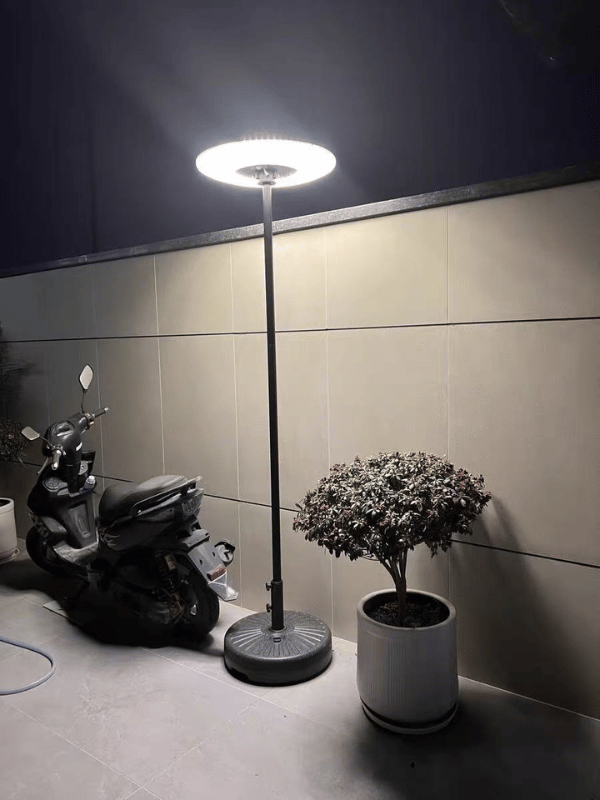
Innovations in Solar Lighting Technology
The solar lighting industry is evolving rapidly, with new technologies pushing the boundaries of efficiency, sustainability, and functionality. Staying informed about these innovations can help you make smarter decisions when selecting or upgrading your solar lighting systems. Let’s explore some of the most impactful advancements shaping the future of solar lighting.
Advancements in LED Efficiency
One of the most significant breakthroughs in recent years has been the development of ultra-efficient LED chips capable of delivering over 200 lumens per watt (lm/W). These high-performance LEDs are revolutionizing solar lighting by providing more brightness with less energy consumption. For example, a 200 lm/W LED can produce the same light output as a 100 lm/W LED while using half the energy. This not only reduces the size of the required solar panel and battery but also lowers overall system costs.
These advancements are particularly beneficial for large-scale applications like highways or industrial yards, where high brightness is essential. Additionally, the improved thermal management in modern LEDs ensures longer lifespans, reducing maintenance needs and further enhancing cost-effectiveness.
What This Means for You: When evaluating solar lighting options, prioritize systems that use the latest high-efficiency LEDs. They may have a slightly higher upfront cost, but the long-term savings in energy and maintenance make them a worthwhile investment.
Smart Solar Controllers
Solar controllers have come a long way from basic on/off switches. Modern systems now feature advanced Maximum Power Point Tracking (MPPT) controllers, which optimize the energy harvested from solar panels. MPPT controllers can increase charging efficiency by up to 30% compared to older Pulse Width Modulation (PWM) controllers, especially in low-light conditions or during cloudy weather.
Another exciting development is the integration of smart power-saving modes. These controllers can dynamically adjust light output based on factors like time of night, motion detection, or battery charge levels. For instance, a streetlight might operate at 50% brightness during off-peak hours and ramp up to full brightness when motion is detected. This not only conserves energy but also extends battery life.
What This Means for You: Look for solar lighting systems with MPPT controllers and smart features. These technologies ensure consistent performance, even in challenging conditions, and help maximize the return on your investment.
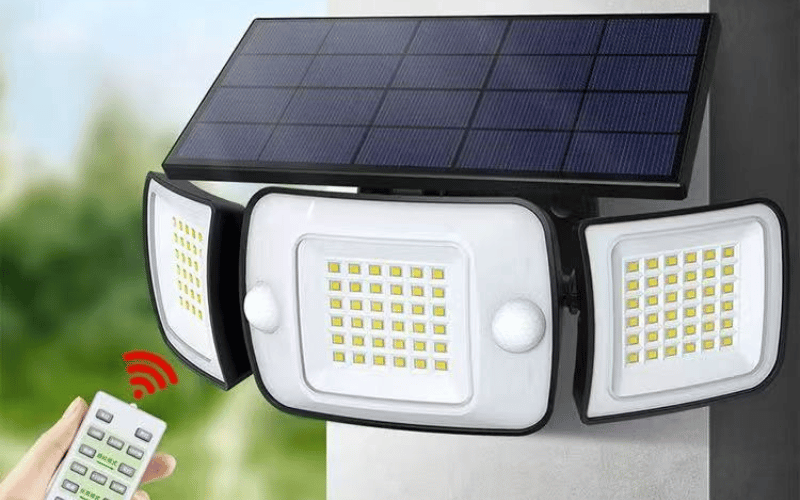
Sustainable Materials and Designs
As sustainability becomes a global priority, the solar lighting industry is embracing eco-friendly materials and designs. Manufacturers are increasingly using recyclable materials like aluminum and tempered glass, as well as biodegradable packaging to reduce environmental impact. Some systems even incorporate solar panels made from low-carbon or recycled materials.
In addition to materials, modular designs are gaining popularity. These systems allow for easy replacement of individual components, such as batteries or LED modules, rather than discarding the entire fixture. This not only reduces waste but also simplifies maintenance and extends the lifespan of the system.
Another trend is the use of “dark-sky compliant” designs, which minimize light pollution by directing light downward and reducing glare. These fixtures are particularly important in urban and suburban areas, where excessive light can disrupt ecosystems and obscure the night sky.
What This Means for You: When choosing solar lighting, consider systems that prioritize sustainability. Eco-friendly materials, modular designs, and dark-sky compliance not only benefit the environment but also reflect a forward-thinking approach to lighting.
Moving Forward with Innovation
The advancements in LED efficiency, smart solar controllers, and sustainable designs are transforming solar lighting into a more efficient, reliable, and eco-conscious solution. By staying informed about these innovations, you can select systems that not only meet your immediate needs but also align with long-term goals for energy efficiency and environmental responsibility.
Bonus: FAQs About Solar Light Brightness
Over the years, I’ve encountered many questions about solar light brightness. Here are some of the most common ones, along with detailed answers to help you make informed decisions.
What are the highest lumens available for solar lights?
Solar lights have come a long way in terms of brightness. Today, high-performance solar lights can deliver up to 40,000 lumens or more, typically used for large-scale applications like highways, industrial yards, or sports fields. These systems often feature advanced LED chips with efficiencies exceeding 200 lumens per watt, paired with high-capacity batteries and large solar panels to support such intense brightness.
For residential or small commercial applications, solar lights generally range from 100 to 10,000 lumens, depending on the use case. For example, a 300-lumen light is perfect for a garden pathway, while a 5,000-lumen fixture can illuminate a parking lot or small roadway.
Pro Tip: When evaluating high-lumen systems, consider the trade-offs, such as larger solar panels, heavier fixtures, and higher costs. Always balance brightness with your specific needs and budget.
How do I calculate the number of lumens I need for my space?
Calculating the required lumens depends on the size of the area and the desired brightness level (measured in lux). Here’s a simple formula to guide you:
Lumens = Lux × Area (in square meters).
For example, if you’re lighting a 50-square-meter parking lot and need an average of 20 lux for safety, you’ll require:
Lumens = 20 × 50 = 1,000 lumens.
Here are some general lux recommendations for different applications:
- Pathways: 5-10 lux
- Residential streets: 10-20 lux
- Parking lots: 20-30 lux
- Highways: 30-50 lux
Pro Tip: Use lighting simulation tools or consult a professional to ensure even light distribution and avoid dark spots.
Can solar lights be as bright as traditional electric lights?
Yes, modern solar lights can match or even exceed the brightness of traditional electric lights, thanks to advancements in LED technology and energy storage. High-efficiency LEDs now deliver comparable lumen outputs while consuming far less energy. For example, a 10,000-lumen solar streetlight can provide the same level of illumination as a traditional electric fixture of similar brightness.
However, the key difference lies in energy management. Solar lights rely on stored energy from the sun, so their performance depends on factors like battery capacity, solar panel size, and weather conditions. Properly designed systems can deliver consistent brightness throughout the night, rivaling traditional electric lights in both performance and reliability.
Pro Tip: For areas requiring 24/7 lighting, consider hybrid systems that combine solar with grid power to ensure uninterrupted performance.
How do weather conditions affect solar light performance?
Weather conditions can significantly impact the performance of solar lights, as they rely on sunlight to charge their batteries. Here’s how different conditions affect them:
- Cloudy or Rainy Days: Reduced sunlight means less energy is stored, which can lower brightness or shorten operating hours. Systems with MPPT controllers and high-capacity batteries are better equipped to handle these conditions.
- Winter Months: Shorter daylight hours and lower sun angles can reduce charging efficiency. In colder climates, lithium-ion batteries perform better than lead-acid batteries, as they are more resistant to temperature fluctuations.
- Dust and Debris: Accumulation on solar panels can block sunlight and reduce charging efficiency. Regular cleaning is essential to maintain optimal performance.
Pro Tip: If you live in an area with frequent cloudy weather or long winters, choose systems with oversized solar panels and batteries to compensate for reduced sunlight. Additionally, consider adding a backup power source for critical applications.
By understanding these key aspects of solar light brightness, you’ll be better equipped to select and maintain a system that meets your needs. If you have more questions or need personalized advice, don’t hesitate to reach out—we’re here to help you make the most of your solar lighting investment.
Conclusion
When it comes to solar lighting, understanding the key factors that influence performance is essential for making informed decisions. Let’s recap the most important takeaways to guide you in your journey toward effective and sustainable outdoor lighting:
- Lumens and Lux: These metrics are the foundation of understanding brightness. Lumens measure the total light output, while lux focuses on the intensity of light on a specific surface. Together, they help you evaluate and compare lighting solutions for your needs.
- Key Performance Factors: The efficiency of LED chips, the capacity and performance of batteries, and the power of solar panels all play critical roles in determining how well a solar lighting system performs. Each component must work in harmony to deliver reliable and consistent illumination.
- Design and Placement: Proper design and strategic placement of fixtures are just as important as the technology itself. Whether it’s optimizing beam angles for pathways or ensuring even coverage in parking lots, thoughtful planning ensures you achieve the desired lighting effect without overspending or wasting energy.
Solar lighting is more than just a practical solution—it’s a sustainable and cost-effective way to illuminate outdoor spaces while reducing environmental impact. With advancements in technology, such as high-efficiency LEDs, smart controllers, and eco-friendly designs, solar lighting has become a reliable option for everything from residential gardens to large-scale industrial projects.
If you’re considering solar lighting for your space, don’t hesitate to reach out for expert guidance. Our team is here to help you navigate the options, design tailored solutions, and ensure you get the most out of your investment. Let’s work together to create a brighter, more sustainable future—one light at a time.


